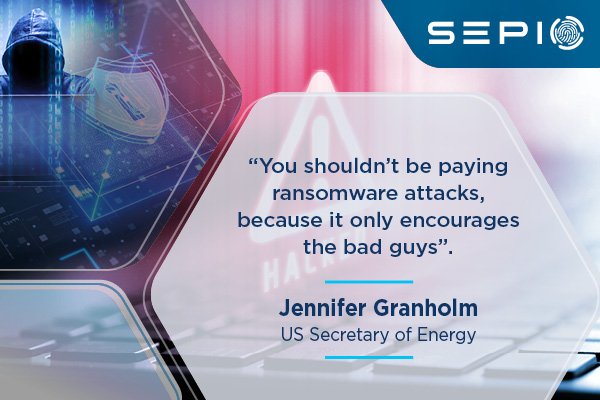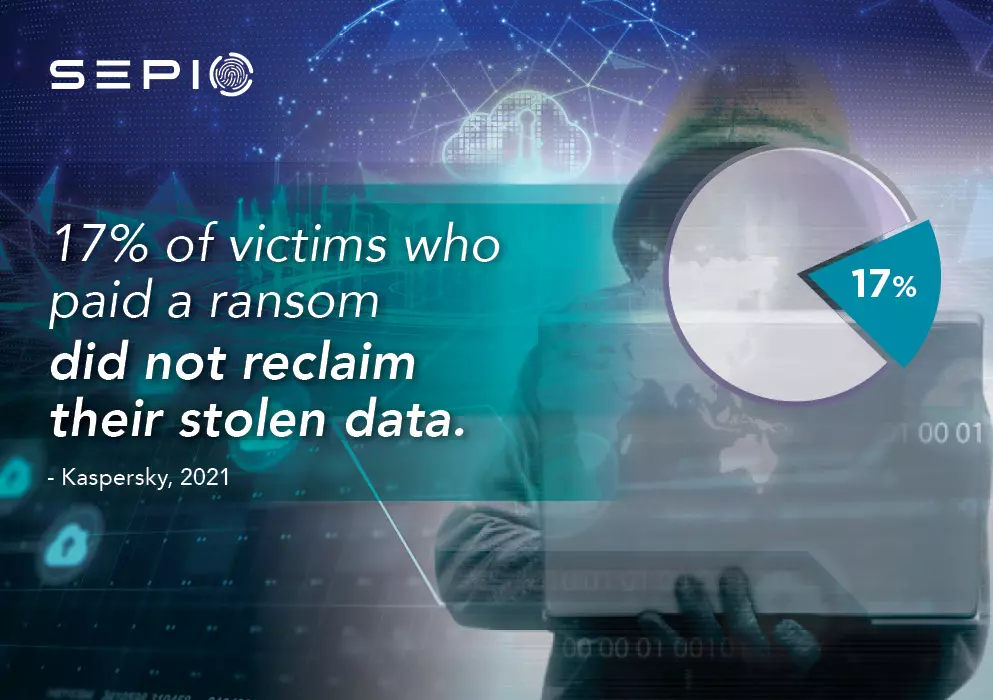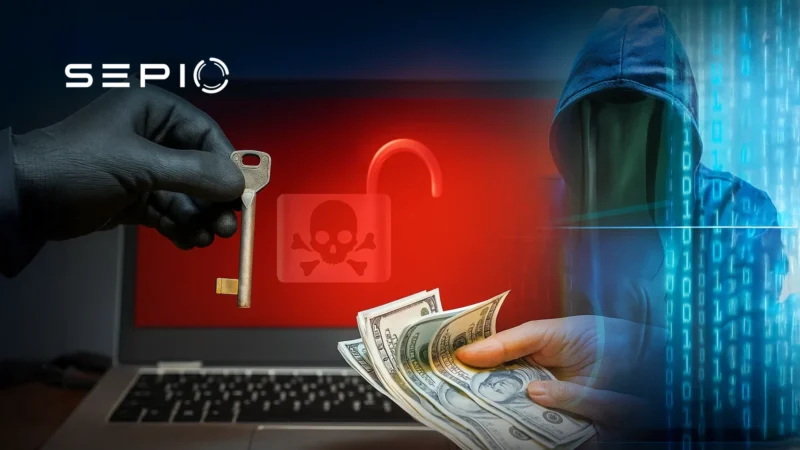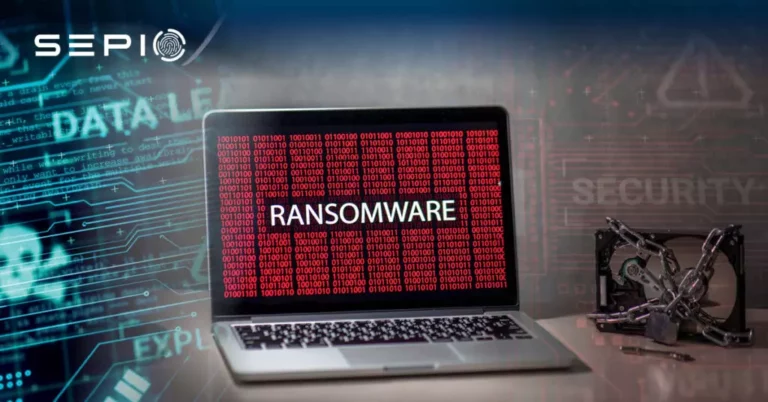Ransomware critical infrastructure attacks have escalated, affecting national security, healthcare, energy, and essential services. These highly targeted attacks exploit vulnerabilities in both digital and physical systems, crippling operations and forcing organizations into impossible choices. With hardware-based ransomware threats rising, the need for comprehensive cybersecurity strategies has never been greater.
The Catch-22 of Ransomware
When targeted by ransomware, organizations face a difficult choice. Security experts and government officials alike discourage ransom payments as they only embolden attackers. In fact, 80% of victims who pay experience repeat attacks. According to US Secretary of Energy Jennifer Granholm, paying ransomware demands encourages future incidents, leading many companies to reconsider their approach.

Further, paying the ransom is not a guarantee to file restoration. As explained by FBI Director Christopher Wray, “victims may not automatically get back their data despite forking over millions”. Whether the decryption key was faulty, or not even provided, 17% of victims who paid a ransom did not reclaim their stolen data, according to Kaspersky’s research. However, many enterprises store backups of their data, minimizing the pressure to pay. In 2019, Teamsters used their archival material to rebuild their systems following a ransomware attack. They avoided the payment and recovering 99% of their data.

Ransomware Critical Infrastructure
For critical infrastructure, avoiding ransom payments is especially challenging. With limited tolerance for downtime, organizations responsible for national security, healthcare, and essential services often pay to restore operations. In 2020, healthcare was the top target for ransomware attackers, as continuous operations were vital during the pandemic. The $4.4 million paid by Colonial Pipeline and $11 million by JBS highlight the significant financial and operational pressures on critical infrastructure organizations.
Ransomware Costs Beyond the Ransom
Even for organizations with data backups, ransomware threats can be costly. Attackers often leverage stolen data as a bargaining chip, while recovery efforts and associated financial impacts extend well beyond the ransom itself. This often puts companies in a no-win situation: paying might fuel more attacks, while refusal to pay risks data loss and financial repercussions.
Preventing Hardware-Based Ransomware Attacks
We would not have to choose between different vaccines had the pandemic never happened. Similarly, enterprises will not have to decide whether to pay the ransom or not if they do not get infected in the first place. While infection is not entirely avoidable, enterprises have several options that, when deployed simultaneously, can reduce the chances of a successful attack. The FBI, and many other expert cybersecurity sources, suggest the following practices:
- Educate Employees on secure practices.
- Keep Systems Updated with the latest security patches.
- Deploy Anti-Malware Software to protect against ransomware.
- Regularly Backup Data to minimize the need for payments.
- Develop an Incident Response Plan to ensure quick, organized action.
Such recommendations provide enhanced protection and should be quickly adopted if they have not been already. However, by neglecting hardware security, none of the above recommendations address the issue of Rogue Devices. Without hardware security, the physical layer remains uncovered, thus allowing Rogue Devices to go undetected as they operate on this layer-which can result in hardware-based attacks… Spoofed Peripherals are manipulated on the Physical Layer and impersonate legitimate HIDs, being detected as such by endpoint security software. Network Implants go entirely undetected by network security solutions, including NAC, as they sit on the physical layer, which such solutions do not cover. Without hardware security, enterprises are completely exposed to hardware-based ransomware attacks, no matter how many alternative security measures are in place.
Sepio’s Physical Layer Security Solution
Sepio’s platform secures the Physical Layer, providing comprehensive device visibility that identifies and manages every connected device. Sepio uses Physical Layer fingerprinting and Machine Learning to recognize rogue devices by analyzing their electrical characteristics, ensuring no device goes undetected. In doing so, Sepio can provide organizations with ultimate device visibility and detect vulnerable devices and switches within the infrastructure.
In addition to the deep visibility layer, a comprehensive policy enforcement mechanism recommends on best practice policy and allows the administrator to define a strict, or more granular, set of rules for the system to enforce. When a device breaches the pre-set policy, Sepio automatically instigates a mitigation process that instantly blocks unapproved or Rogue hardware.
Protect Your Critical Infrastructure from Ransomware
Taking a proactive approach to ransomware protection is essential. Sepio’s Physical Layer security solution gives organizations unmatched device visibility, policy enforcement, and effective hardware-based ransomware prevention. Enhance your defenses and ensure operational continuity with Sepio. Contact us today to learn more about protecting your assets from ransomware threats.






